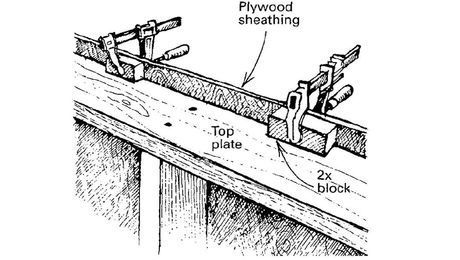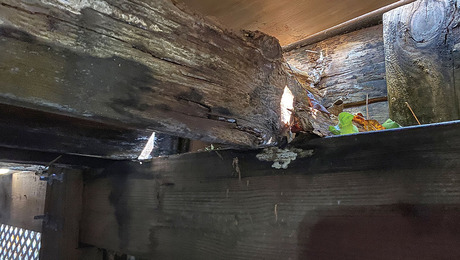A Bookcase That Breaks the Rules
Handsome and affordable, these built-in bookshelves take less than a day with simple methods and no special tools.

Synopsis: A veteran trim carpenter explains his preferred method for making bookcases quickly and efficiently, getting the maximum from every sheet of plywood. The units can stand alone or be ganged together. A sidebar offers two simple jigs that let you crosscut and rip plywood accurately with circular saw.
I remember the first bookcase I ever built. I didn’t want to spend too much money on material, so I used AC fir plywood and had to sand the stuff until my hands hurt. I wanted the case to last forever, so I dadoed all the shelves into the sides — a time-consuming job, especially when my 3⁄4-in. router bit was a little too wide for the 3⁄4-in. plywood shelves.
I attached the face frame one piece at a time, which meant the joints weren’t fastened together tightly, which was okay. But I made the shelves the same depth as the sides, so when I installed the nosing on the shelves, the face frame spread apart. Then, after all that, I had to finish the thing.
Since that first attempt and during my 30-plus years of finish carpentry, I’ve built a lot of bookcases — not just for clients, but for myself as well. Over that time I have learned a lot of valuable lessons about bookcase design and construction. I have some tips and methods as well as some misconceptions about building a better bookcase faster and easier.
Use readily available materials
I’ve built bookcases from many different materials, from 3⁄4-in. fir plywood to 2x12s. On occasion I’ve also used 3⁄4-in. veneered MDFcore (medium-density fiberboard) sheet goods, but I’ve found that plywood is stronger, spans farther and holds screws better than MDF. So I usually choose 3⁄4-in. hardwood-veneer plywood for stain-grade work or 3⁄4-in. birch veneer plywood for paint-grade work.
I make stiles, rails and nosings from solid stock to hide the edge grain of the plywood sides and shelves. I prefer poplar for paint grade bookcases, and for stain-grade work, I use hardwood that matches the plywood veneer, in this case Honduras mahogany.
The bookcase back can be made from any 1⁄4-in. sheet stock, but I opted for mahogany veneer plywood to match the rest of the material. By the way, MDF core is fine for the bookcase back.
I keep costs to a minimum by using plywood for the shelves and sides and solid stock for the stiles and rails. The materials for this 32-in. wide bookcase in Honduras mahogany (with the face-frame end panel) cost about $230. Paint-grade materials would cost about half that amount. Considering that the bookcase took me less than a day, I figure it could be built, finished and installed for around $500.
Getting the most from material
I can get the shelves and sides for a single 32-in. unit easily out of a single sheet of plywood. I start by ripping the two finished outer sides (if both sides are exposed), and then the two narrower inner sides. (The outer sides are 1⁄4 in. wider to cover the edges of the back.) I make the height of the bookcase around 60 in. so that the cutoff pieces from each of the sides can be used for shelves. Enough material should be left over for the top or for shelves on additional bookcases.
For more photos, drawings, and details, click the View PDF button below:


























